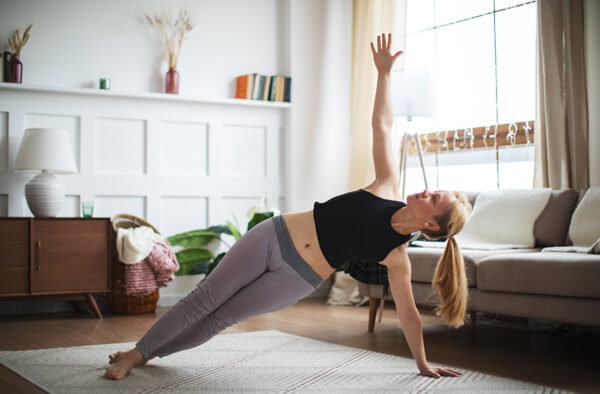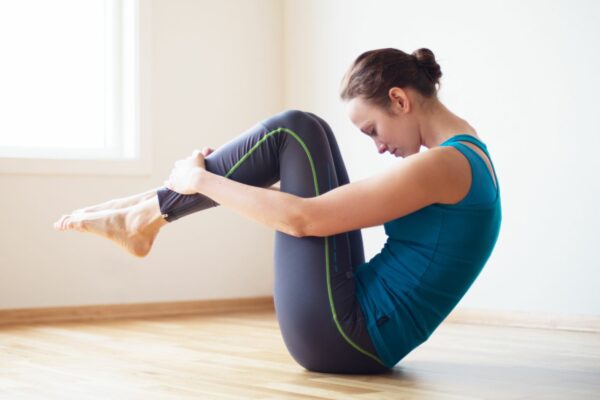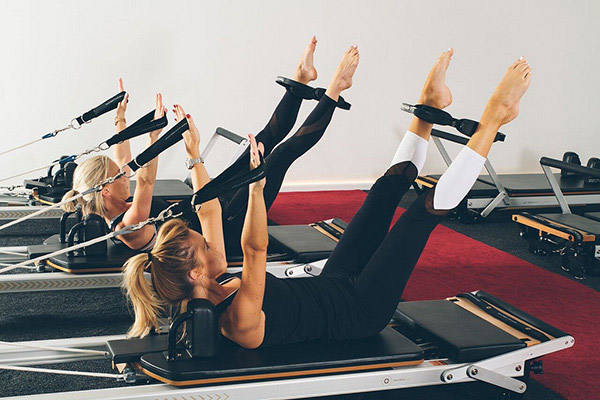Are you looking for a way to increase your strength, flexibility, and overall well-being without leaving the comfort of your home? If so, you may want to consider trying Pilates. This low-impact form of exercise has become increasingly popular in recent years, and for good reason. Not only can it help you build a stronger core and improve your posture, but it can also help alleviate stress and reduce the risk of injury.
But if you’re new to Pilates, getting started can feel a bit overwhelming. There are many different exercises to learn, and you may not be sure where to begin. That’s why we’ve put together this beginner’s guide to at-home Pilates. Read on to learn the basics of this beneficial practice and how to get started today.
What is Pilates?
Pilates is a type of exercise that was developed by Joseph Pilates in the early 20th century. It focuses on strengthening the core muscles, which include the abdominals, back, and hips, as well as improving flexibility and posture. Unlike some other forms of exercise, such as high-impact aerobics or weightlifting, Pilates is low-impact and gentle on the joints.
The benefits of Pilates
There are many benefits to practicing Pilates, including:
- Improved core strength: By targeting the muscles in your core, Pilates can help you build a stronger and more stable torso.
- Better posture: Poor posture can cause aches and pains in the neck, back, and shoulders. Pilates can help you improve your posture and reduce the risk of these issues.
- Increased flexibility: Pilates incorporates stretching exercises that can help improve your overall flexibility and range of motion.
- Reduced stress: Pilates focuses on controlled movements and breathing, which can help you feel more relaxed and less stressed.
- Lower risk of injury: Pilates is low-impact and gentle on the joints, making it a great choice for those who are recovering from an injury or looking to reduce their risk of future injuries.
Getting started with at-home Pilates
If you’re ready to give Pilates a try, the good news is that you can do it from the comfort of your own home. Here’s how to get started:
Find a quiet, comfortable space
You’ll need a space where you can move freely and won’t be disturbed. A yoga mat or other soft surface can be helpful for cushioning your joints.

Choose a routine
There are many different Pilates routines available online, so choose one that’s appropriate for your fitness level and goals. Make sure to follow along with a qualified instructor who can guide you through the exercises and ensure you’re using the proper form.
Start with the basics
If you’re new to Pilates, it’s important to start with the basics. Focus on learning the proper form for each exercise before you start adding more difficult movements.
Practice regularly
Like any form of exercise, Pilates requires consistency in order to see results. Aim to practice at least a few times a week, and gradually increase the length and intensity of your sessions as you become more comfortable with the exercises.

Listen to your body
As with any form of exercise, it’s important to listen to your body and avoid pushing yourself too hard. If an exercise causes pain or discomfort, stop and consult with a qualified instructor or healthcare provider.
Additional insights to help you with your Pilates practice
Here are some additional tips and insights to help you get the most out of your at-home Pilates practice:
Invest in some basic equipment
While you don’t need any equipment to practice Pilates, there are a few basic items that can make your practice more comfortable and effective. Consider investing in a Pilates ball, resistance band, or small Pilates props like blocks or wedges. These tools can help you deepen your stretches, increase resistance during exercises, and add variety to your routine.

Pay attention to your breath
One of the fundamental principles of Pilates is breath control. Each movement is coordinated with an inhale or an exhale, which can help you engage your core muscles more effectively and increase your mind-body awareness. Try to focus on your breath throughout your practice, inhaling deeply through your nose and exhaling fully through your mouth.
Modify as needed
Pilates is a customizable practice that can be adapted to suit your individual needs and abilities. If you’re working with an injury or mobility issue, don’t hesitate to modify the exercises to make them more accessible. A qualified Pilates instructor can help you make modifications and suggest alternative movements if needed.

Mix it up
While it’s important to focus on the basics when you’re first starting out with Pilates, once you’ve become comfortable with the foundational movements, don’t be afraid to mix things up. Try different routines, incorporate new exercises, and experiment with different props or equipment. This can help keep your practice fresh and challenging.
Stay consistent
Consistency is key when it comes to Pilates. To see the most benefit, aim to practice at least three to four times per week. If you’re short on time, even a ten-minute Pilates session can be beneficial. You may also want to consider scheduling your Pilates practice for the same time each day or week to help make it a habit.
Pilates is a low-impact, full-body workout that offers numerous benefits for both physical and mental health. Whether you’re a beginner or an experienced practitioner, there are many ways to incorporate Pilates into your at-home fitness routine. By starting slowly, focusing on proper form, and staying consistent, you can build strength, flexibility, and body awareness over time. Additionally, investing in some basic equipment, paying attention to your breath, modifying exercises as needed, mixing up your routine, and staying consistent with your practice can help you get the most out of your at-home Pilates practice. So why not give it a try today and discover the many benefits of Pilates for yourself?


